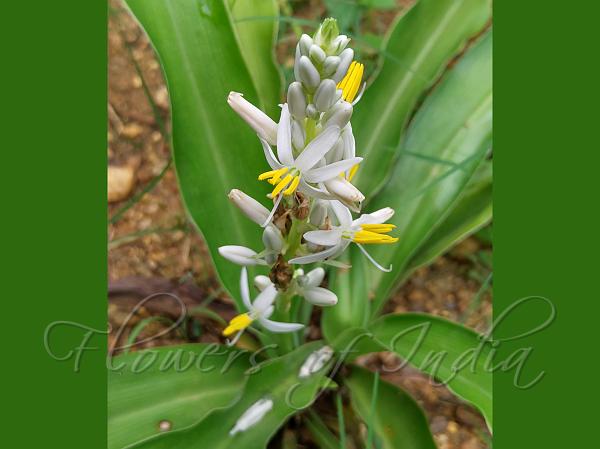|
| East-Himalayan Spider Plant |
|

|

| File size | 416353 |
| Original date | 9/10/20 11:07 AM |
| Resolution | 4032 x 3024 |
| Flash | Flash did not fire |
| Focal length | 4.36mm |
| Exposure time | 1/471s |
| Aperture | 1.8 |
| Focus Distance | |
| Metering Mode | Center weighted average |
| Camera make | HMD Global |
| Camera model | Nokia 8.1 |
| Sensor type |
|
|
|
|
Photo: |
Botanical name: Chlorophytum arundinaceum Family: Asparagaceae (Asparagus family)
Synonyms: Anthericum tuberosum
Synonyms: Anthericum tuberosum
East-Himalayan Spider Plant is a perennial herb with a
short hard root stocks; roots often thick, fleshy and cylindrical. The
leaves are 15-35 cm long and lanceshaped. The plant is considered
endangered in the country. Flowering stem is longer than the leaves, up
to 40 cm long. Flowers are borne in a dense raceme which is shortly
branched. Flowers are white, occuring in pairs; bracts small,
membranous; flower-stalks about 7 mm, jointed above middle. Tepals are
6, white, oblong, about 8 mm long, anthers as long as or longer than
the filaments and yellow in color. Capsule is 3-lobed; seeds circular,
wrinkled. East-Himalayan Spider Plant is found in the East Himalaya,
from Nepal to NE India and Myanmar, at altitudes of 500-1200 m.
Medicinal uses: Tubers having medicinal value
are used as general tonic, containing the steroid sapogenine, protein
and calcium. Tubers are fat free and they have high aphrodisiac
property. It is also useful in diseases like renal calculus,
leucorrhoea and diabetes.
Tubers having medicinal value
are used as general tonic, containing the steroid sapogenine, protein
and calcium. Tubers are fat free and they have high aphrodisiac
property. It is also useful in diseases like renal calculus,
leucorrhoea and diabetes.
Medicinal uses:
 Tubers having medicinal value
are used as general tonic, containing the steroid sapogenine, protein
and calcium. Tubers are fat free and they have high aphrodisiac
property. It is also useful in diseases like renal calculus,
leucorrhoea and diabetes.
Tubers having medicinal value
are used as general tonic, containing the steroid sapogenine, protein
and calcium. Tubers are fat free and they have high aphrodisiac
property. It is also useful in diseases like renal calculus,
leucorrhoea and diabetes. | Identification credit: Manoranjan Paramanik | Photographed in Purulia, West Bengal. |
• Is this flower misidentified? If yes,